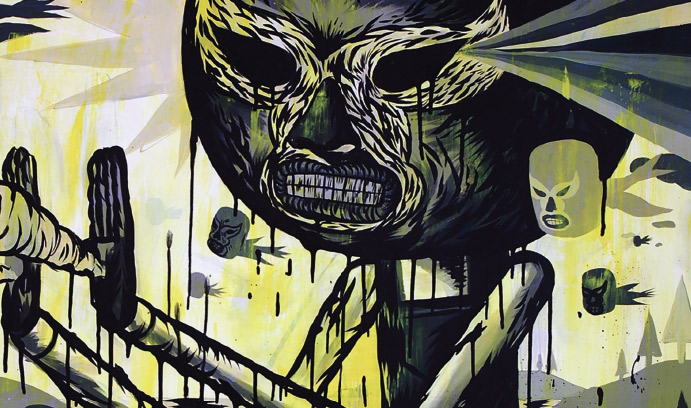Constructing Identity on the Border

When Miguel Pillado was 16, his family returned to the United States, where he was born, from Mexico, where he’d grown up. His Mexican American peers at the Los Angeles high school he attended looked like him, he says, but refused to speak Spanish. He spoke no English.
“That was the first moment in which I felt difference,” says Pillado, assistant professor of modern languages and literatures. “Even though, within the spectrum of the United States, Mexican Americans are a marginalized group of people, when I came here there was also a hierarchy within this same group.”
This experience sparked Pillado’s interest in cultural studies and the issue of internal hierarchies. Today, he specializes in contemporary Mexican literature, with a focus on border studies and migration. He is writing a book, tentatively titled La Ciudad de Una y Mil Caras (The City of a Thousand and One Faces), which explores the works of four writers from Tijuana, Mexico, and their development of new discourses of border identity on the Mexican side of the U.S./Mexican border.
“It has to do with self-perception of identity,” Pillado says. “How do people on the Mexican side of the border perceive themselves, and what kind of discourses do they use to differentiate themselves from the people that live on the border on the American side?”
Situated just 20 miles south of San Diego, Tijuana has long served as a recreation destination for Americans, with the reputation for being a “sin city,” a place where tourists can gamble, drink and have an “exotic experience of Mexico,” says Pillado. That stereotype, he says, has shaped the international image of the city. The perception within Mexico, however, is that Tijuana is “a city through which American culture filters and contaminates and pollutes Mexican identity and Mexican culture.”
The writers Pillado studies—Federico Campbell, Luis Humberto Crosthwhite, Rosina Conde and Heriberto Yépez—attempt to break down these stereotypes and portray Tijuana as they see it: a “normal” place where regular people live, work and play.
Each author addresses different aspects of life in Tijuana. Rosina Conde, for example, presents Tijuana as “a city [with] a very patriarchal society that resembles the machismo that’s taken over the rest of the country,” says Pillado. “She goes into exploring that side of Tijuana, how machismo is present in every single family that lives there, and [how] it kind of shapes the society as well.”
An Unexpected Connection
Conversations with the writers have enhanced Pillado’s analysis of their work, providing a more in-depth sense of their methods and motivations. As it turns out, a serendipitous series of events delivered one of the writers practically to his own doorstep.
While Pillado was in graduate school at the University of California, Berkeley, he read an essay penned by Heriberto Yépez that helped direct the focus of his research. The essay addressed how the metaphor of the border developed by Chicano (Mexican American) writers in the United States had become a “hegemonic model of representation for the whole people that live on both sides of the border,” and how Mexican Americans, many of whom come from Mexican working class families who migrated to the U.S., return to Tijuana to spend money and “perform the American Dream show.”
“I saw the conflict there,” says Pillado. “I got more into reading literature from Tijuana, and I started tracing connections and differences with the literature produced by the Chicano writers.”
Three years into Pillado’s studies, Yépez himself arrived at Berkeley as a Ph.D. student, having already published numerous books.
“After that,” says Pillado, “the project kind of took shape.”
The conflict he noticed while reading Yépez’s essay became more personal when he visited Tijuana to conduct his research. This, he says, further motivated his project.
“I found myself in this kind of in between,” he says. “I had grown up in Mexico, but then at that time I had already spent the second half of my life in the U.S. I was the one going to Tijuana as a researcher, but also I was coming back to Mexico from a position of privilege. … I was aware of what I was representing in Tijuana: I was just one more client, one tourist. … It’s a little bit complex.”
In the end, says Pillado, his book is like a collage representing the entire city.
“On the one hand I’m dealing with how these writers from this city try to break down the myths around the city,” he says. “On the other hand, it’s about how they are constructing an identity that is about themselves [and] about their community that is different from other discourses that are trying to be imposed upon them.”
Illustration by Charles Glaubitz
Posted on:




